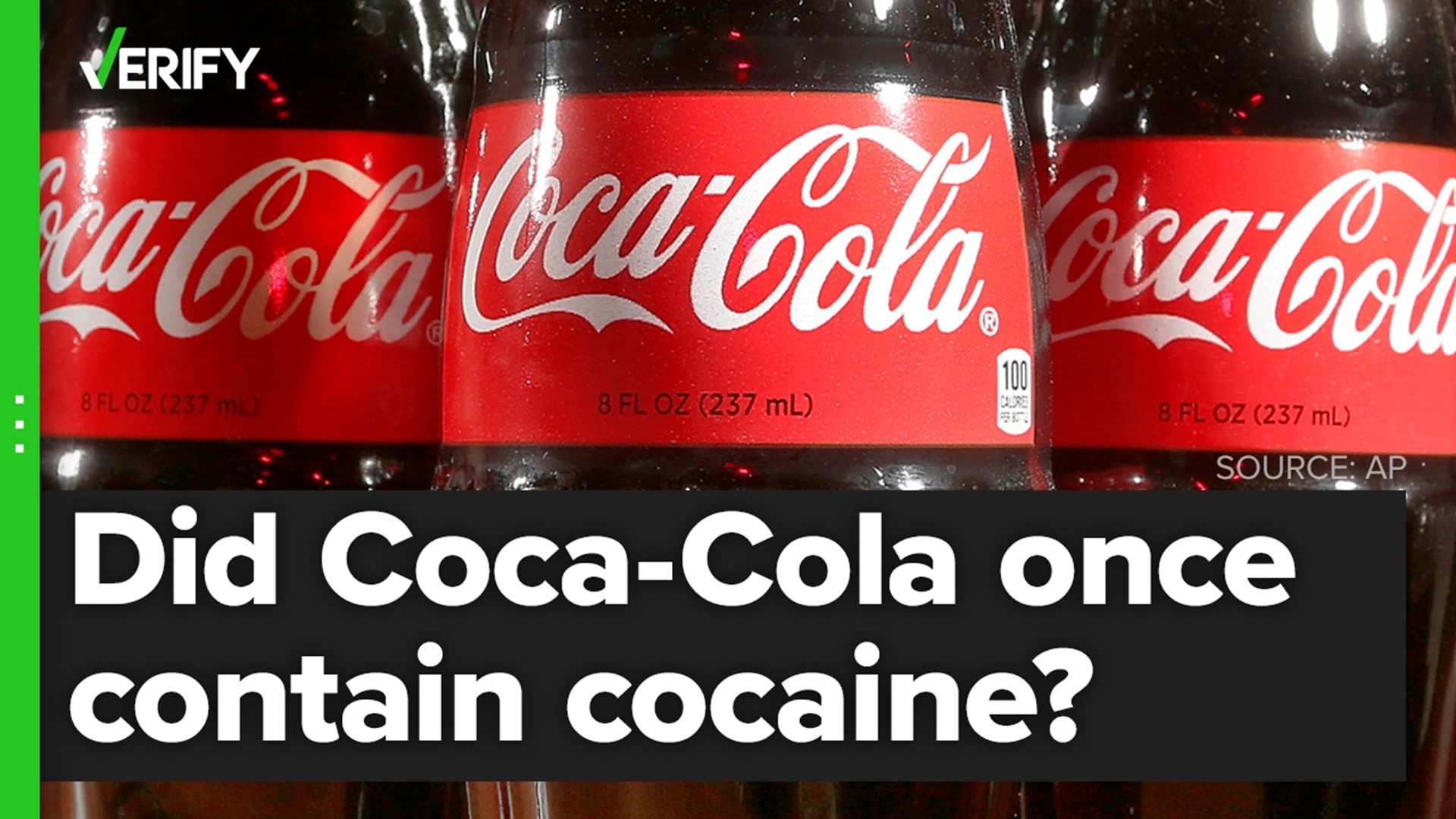There’s been no shortage of talk about Elon Musk, the world’s richest man, after he announced plans to purchase of Twitter. But news of another proposed purchase also sparked interest on social media.
“Next I’m buying Coca-Cola to put the cocaine back in,” Musk wrote in a viral tweet on April 27.
While Musk’s tweet is getting a lot of attention, his claim about an illicit ingredient in the popular soda has been circulating for many years.
THE QUESTION
Did Coca-Cola once contain cocaine?
THE SOURCES
- The National Institute on Drug Abuse (NIDA)
- U.S. Drug Enforcement Administration Museum
- Transnational Institute, a nonprofit research and advocacy think tank
- New York Times article published in 1988
- Coca-Cola Company UK
- Gregory Collins, Ph.D., associate professor of pharmacology at the University of Texas San Antonio
- Mark Pendergrast, author of the book “For God, Country and Coca-Cola”
THE ANSWER
Coca-Cola contained small amounts of cocaine when it was invented, but not in its white powdered form that we know today, experts say. The beverage contained coca leaf extract, from which cocaine is derived.
WHAT WE FOUND
Pharmacist John Pemberton invented Coca-Cola in 1885, making the original formula for the beverage in his backyard. He advertised Coca-Cola as a “patent medicine” that could cure headaches, upset stomach and fatigue. Patent medicines weren’t regulated; they often contained addictive ingredients like cocaine and opium, and toxic ingredients like mercury and lead, according to the National Institute on Drug Abuse (NIDA).
NIDA said in a 2020 blog post that Pemberton’s recipe “contained cocaine in the form of an extract of the coca leaf,” inspiring part of the soft drink’s name.
The coca leaf in its natural form is a “harmless and mild stimulant comparable to coffee,” but cocaine can be extracted from its leaves, according to the Transnational Institute.
Gregory Collins, Ph.D., an associate professor of pharmacology at the University of Texas San Antonio, also told VERIFY that the cocaine alkaloid is “present at very low levels” – less than 1% – in most coca leaves. The cocaine alkaloid can then be extracted and purified to produce the drug cocaine.
Coca-Cola likely contained cocaine alkaloid as part of coca leaf extract “at very low concentrations and similar to coca leaf teas,” Collins explained.
Cocaine was legal and a common ingredient in U.S. medicines aimed at curing a wide range of ailments when Coca-Cola was invented, according to NIDA. People thought cocaine was safe to use in small amounts at the time.
In the 1970s, cocaine became an expensive recreational drug. Its usage increased throughout the country as cocaine became cheaper and more widely available, according to information shared by the U.S. Drug Enforcement Administration Museum.
Mark Pendergrast, author of the book “For God, Country and Coca-Cola,” said Coca-Cola was originally advertised as a “nerve tonic” because it contained a small amount of cocaine in the form of the coca leaf extract and caffeine from the kola nut. The drink “never contained pure cocaine in terms of the white powder being added,” he told VERIFY.
The New York Times also reported in 1988 that a Coca-Cola spokesperson said the “original recipe contained coca with cocaine, but the narcotic was removed just after the turn of the century.”
Despite this, Coca-Cola US directed VERIFY to a statement that says “cocaine has never been an added ingredient in Coca-Cola,” and the drink does not currently contain cocaine “or any other harmful substance.”
There are some differing answers on when Coca-Cola began using a “decocainized” coca extract as one of its flavoring ingredients. Pendergrast and the Transnational Institute says this happened in 1903.
“The amount of cocaine in Coca-Cola was reduced over time, and finally eliminated from the drink by 1929,” according to NIDA. Coca-Cola soon became popular as a “soft” drink as an alternative to hard alcohol during the Prohibition Era.

